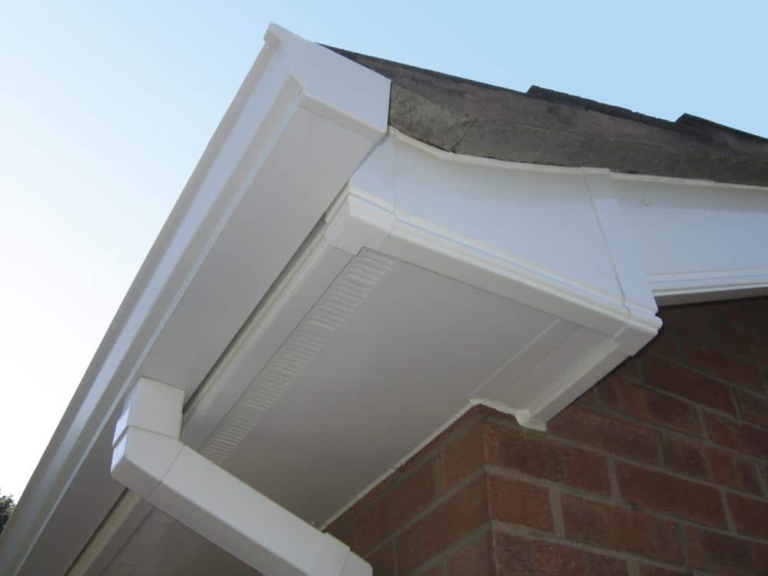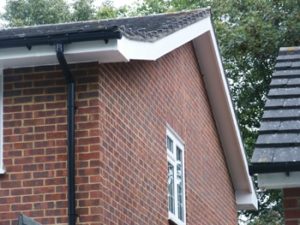Soffit and Fascia Replacement Near MeSoffits are essential to the health of your house. They stop pests, rot, and mold. They also let air circulate through your attic. They also give your roofline a finished look.
A soffit or
fascia board repair near me is damaged must be repaired immediately. Look for signs of discoloration or chew marks.
Damaged or Deteriorated
If your home's fascia is constructed of aluminum, wood vinyl, or another material, its performance and appearance are crucial. They provide a finished appearance to roof overhangs. They draw air and moisture out of the attic, and protect the roofing and wood trim beneath it from weather-related damage. In time, they could be damaged or deteriorated and cause damage to your home's roof and.

Soffits that are damaged or degraded fascias can cause a variety of problems, such as the growth of mold and water infiltration. The damage can also weaken the structure of your roof, which can compromise your home's structural integrity. Pests and rodents may gain access to the attic, where they can create nests or cause more damage.
There are several professionals who can handle soffit and fascia repair like gutter specialists, roofers, and carpenters. When you are looking for a professional, be sure to ask about their work experience and experience. Choosing a reputable, experienced, and licensed professional is the best way to ensure that your soffit and fascia are properly installed and repaired.
Fascias and soffits require homeowners to work from a roof or ladder. The work can be difficult, and working on a ladder is inherently dangerous. Most homeowners do not have the tools or know-how to accomplish these tasks. Employing a professional can make sure the job is completed correctly and that your fascia and soffit can endure the elements for many years.
The most common indications that your fascia and soffit require repairs are cracks, gaps, and discoloration. It is recommended to check them regularly for these issues, as well as for insect or rot-related issues. It is easy to inspect your fascia and soffit, since they are usually visible at ground level. You can also check for gnawmarks, drippings and nesting materials that are indicators of pest and rodent activity. Call a professional immediately if you notice any of these problems.
Infestations

Soffits and fascia guard your roofline from water damage. Soffits are situated on the roof's underside overhang. They help to vent the attic as well as draw water away from the home and discourage pests. As with all other parts of a roofing system, they aren't immune to wear and tear, or environmental issues. They're also susceptible to insect infestations and if you spot any evident signs of an infestation, it's important to have your fascia and soffit repaired as soon as is possible.
The primary role of fascias is to guard the roof's edge from the elements and direct rainwater down and away from your eaves and foundation. It's also responsible for supporting gutters and is the anchor point for other elements such as downspouts. It's also normal for wood fascias to suffer from water damage if gaps or cracks are left untreated, however professionals can close these holes to stop water from entering and causing damage to the structure.
Infestations of fascias and soffits may result from poor maintenance but they could be caused by animals, rodents, or exposure to weather. Birds, squirrels and raccoons are likely to build nests in these structures if they're damp or rotting. Infestations can also happen as the result of poor cleaning, like using pressure washers too close to the edges of your roofline.
If your fascia is infested with mold It's time to contact a professional. The toxic effects of mold can be detrimental to human health, and can cause respiratory and cardiovascular issues if it isn't completely removed. A professional can safely remove and treat mold to ensure that it doesn't recur and cause further damage to your roofline or interior.
Stains on your fascia from water are another indication that it's time to schedule an inspection. This problem usually arises from an attic that's not ventilated, allowing humid air to flow into. If cool air in the attic is unable to escape, it tends to settle in the eaves and cause mold and moisture issues or even a roof leak. A seasoned roofing contractor can help you determine if this is the situation.
Asbestos
Soffits and flanges may appear to be simple architectural elements that provide the structure of your roof an elegant and sleek appearance however, these essential elements do more than just enhance the appearance of your home. These critical parts of your roofline are essential to keep your home warm and dry, and are essential to preventing severe damp and mould damage.
However, if your home's roofline is old, it may contain asbestos, a deadly carcinogen used in many homes and building materials up until the late 1980s. It is important to have your fascia and soffit boards tested by a professional before you begin any roofing work. Asbestos only becomes dangerous if it is cut, broken, or disturbed and the tiny inhalable fibers are released into the air.
If you are concerned that the soffits or the
fascia soffit guttering on your roof are made from asbestos, it may be a good idea to put up temporary scaffolding to ensure the safety for any tradespeople working on your roof. This is because it's a legal obligation of care to ensure that any person working on your property is equipped with the required level of safety-related education and experience.
Asbestos cement soffit boards are usually difficult to recognize, since they're painted to blend with the rest of your property. If you notice signs of wear or rust on the surface or that the wood is sagging or is rotting your soffit could be made of asbestos cement.
While PVC generally covers hairline flaws or cracks, asbestos-laced fascias are more dangerous, since one airborne fiber can cause serious illnesses such as mesothelioma which is a rare type of cancer that affects the lining of your lungs and the chest cavity. This is why it's so important to have asbestos-laced fascia and soffits examined and removed by trained professionals before you get your roofline replaced. It's best to leave this job to the professionals, as it can be a complex task that requires a thorough testing and analysis as well as contamination. It's also important to remember that asbestos can be a significant health risk even when it's in solid condition, so it's essential to have any damaged or old trim examined and removed in addition.
Water Damage
The soffit, or fascia, is a protective barrier that redirects rainwater away from the roofline to the foundation. It also supports gutters and serves as anchor points for other elements like downspouts. It assists in preventing water damage by absorbing the moisture that could otherwise rot and cause structural issues within a house. It also helps control the humidity levels and keep warm buildings by sealing the attic.
Mold and rotting timber can cause damage to the
fascia replacement specialists. These problems can be identified by looking for dark patches or discoloration on the surface of a soffit or the appearance of a soft, crumbly texture. The problem will only get worse as time passes and therefore it is best to have them examined and repaired whenever you can.
Other indications of a damaged fascia are visible cracks or scratches. They can be fixed or replaced by a professional. Pest infestations may also be caused by damaged
fascia board and soffit replacement near me or soffits. Rodents, squirrels and birds are attracted by holes in the fascia or soffits of a house. Once inside, they can scratch at insulation and wiring, as well as leave excrement that poses health risks for the occupants.
The condition of the soffit and the fascia will ultimately have a major impact on the structure and value of a home. A house with soffit and fascia that are prone to water damage will suffer from the effects of rotting, mold, mildew, insect infestations, and other serious issues that can cause costly repairs and replacements.
Soffit or fascias may be constructed from aluminum, vinyl or wood. The type of material can affect how long the boards will last and the price to repair or replace them. Wood fascia boards are usually the most cost-effective but require regular maintenance to ensure their appearance. Vinyl, aluminum, and composite soffits are more durable and less prone to weathering than wood. However, these options can be more expensive than traditional wood option.
 Soffits that are damaged or degraded fascias can cause a variety of problems, such as the growth of mold and water infiltration. The damage can also weaken the structure of your roof, which can compromise your home's structural integrity. Pests and rodents may gain access to the attic, where they can create nests or cause more damage.
Soffits that are damaged or degraded fascias can cause a variety of problems, such as the growth of mold and water infiltration. The damage can also weaken the structure of your roof, which can compromise your home's structural integrity. Pests and rodents may gain access to the attic, where they can create nests or cause more damage. Soffits and fascia guard your roofline from water damage. Soffits are situated on the roof's underside overhang. They help to vent the attic as well as draw water away from the home and discourage pests. As with all other parts of a roofing system, they aren't immune to wear and tear, or environmental issues. They're also susceptible to insect infestations and if you spot any evident signs of an infestation, it's important to have your fascia and soffit repaired as soon as is possible.
Soffits and fascia guard your roofline from water damage. Soffits are situated on the roof's underside overhang. They help to vent the attic as well as draw water away from the home and discourage pests. As with all other parts of a roofing system, they aren't immune to wear and tear, or environmental issues. They're also susceptible to insect infestations and if you spot any evident signs of an infestation, it's important to have your fascia and soffit repaired as soon as is possible.